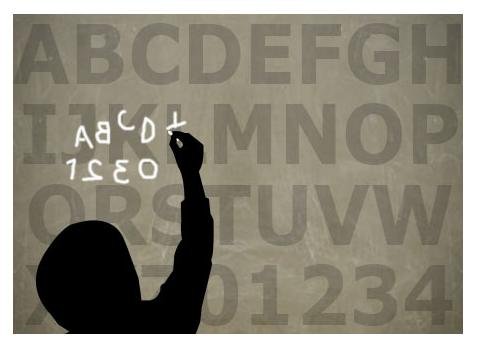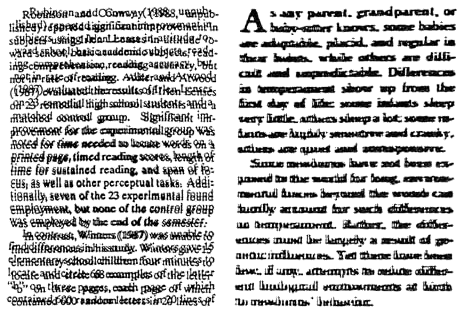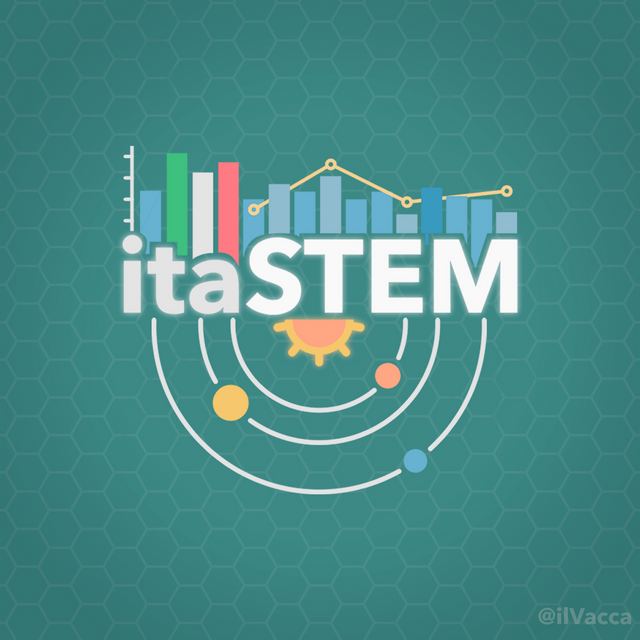Do we really know dyslexia? - Conosciamo davvero la dislessia?

Imagine CC0 Creative Commons - Fonte
What has been said so far can be easily observed with incredible precision in the fovea, the central region of the retina: in the central part there is a small portion of it without cones able to perceive the blue light, in non-dyslexic people this area is round in the dominant and irregular eye in the other eye, in both dyslexic people, both eyes show a roundish area.
It is not clear why some people develop an asymmetric or non-asymmetric disposition, but it is legitimate to think that there is a genetic base at the origin of this process.
And this is good news: after all, knowing the cause of a problem is the first step to solve it.

Imagine CC0 Creative Commons - Fonte
At the moment one useful tool to help dyslexic people is the Opentype Font: a font that has less symmetry in its letters and marked downstroke, in this way it easier for the brain of dyslexic people to discern between different letters and words avoiding problems such as letter confusion or rotation,contrast/blindness, and crowding.
Curiosity
The deceased founder of Ikea, Ingvard Kamprad, was dyslexic and had difficulty storing the code of his company's products, for this reason he associated to each of them a name of something familiar, so as not to have problems in managing the documents related to them.
The only problem is that he was Swedish and so now we have to buy furniture with unpronounceable names, but maybe this is also the Ikea charm.

Immagine CC0 Creative Commons, si ringrazia @mrazura per il logo ITASTEM.
CLICK HERE AND VOTE FOR DAVINCI.WITNESS
Sources
- Albert Le Floch, Guy Ropars (2017). Left-right asymmetry of the Maxwell spot centroids in adults without and with dyslexia.
http://doi.org/10.1098/rspb.2017.1380 - Sito OpenDyslexic

Secondo voi cosa accomuna Robin Williams, Andy Warol, Emile Zola, Jennifer Aniston, George Washington e Keanu Reeves?
Potrà sembrare strano ma sono tutti considerati dislessici (Source AID Italia - Italian Dyslexia Association).
Ma cos'è la dislessia?
La Dislessia è ritenuta un disturbo cognitivo e non un problema intellettuale, lo stesso NIH la definisce come un disturbo dell'apprendimento altre fonti lo definiscono invece come l'incapacità di leggere nel contesto dell'intelligenza normale.
Tale disturbo è più comune di quanto si pensi, infatti fino al 5-10% della popolazione mondiale potrebbe esserne affetta e, nonostante la sua diffusione, ancora oggi si conosce ben poco a riguardo.
Le cause di questo disturbo sono ancora oggi oggetto di dibattito: alcuni affermano che il problema sia da imputare all'elaborazione del linguaggio, mentre altri sostengono che l'elaborazione visiva possa essere la causa principale.
Su quest'ultima ipotesi ha lavorato un gruppo di ricerca dell'Università di Rennes, il quale ha scoperto che gli occhi dei dislessici presentano una diversa disposizione delle cellule responsabili della percezione della luce: in individui sani queste cellule sono organizzate in maniera pressochè casuale, in modo che le differenti fonti luminose siano percepite in maniera diverso da ciascun occhio. Successivamente sarà il sistema nervoso centrale a definire l'immagine più accurata, portando allo sviluppo di un "occhio dominante".
Nelle persone affette da dislessia, invece, i coni (i "responsabili" della percezione della luce rossa, blu e verde) sono disposti secondo schemi simmetrici uguali per entrambi gli occhi, in questo modo i modelli di percezione degli stimoli luminosi vengono elaborati come identici e simultaneamente, il cervello è portato così a vedere questi modelli come immagini speculari.
La mancanza di un occhio dominante sarebbe sufficiente a spiegare perché individui dislessici vedano caratteri come "b" e "d" o "3" ed "E" come indistinti. Il loro cervello non è in grado di distinguere correttamente tra forme speculari.

Imagine CC0 Creative Commons - Fonte
Quanto è stato esposto sino ad ora può essere osservato con grande precisione nella fovea, la porzione centrale della retina: nella regione centrale vi è una piccola porzione di essa priva di coni in grado di percepire la luce blu, in individui sani quest’area è rotonda nell'occhio dominante e irregolare nell'altro occhio, nelle persone affette da dislessia entrambi gli occhi mostrano un'area tondeggiante.
Non è ben chiaro perché alcune persone sviluppino una disposizione asimmetrica o non asimmetrica, ma è lecito pensare che alla base di questo processo vi sia una base genetica.
E questa è una buona notizia: dopo tutto, conoscere la causa di un problema è il primo passo per risolverlo.

Imagine CC0 Creative Commons - Fonte
Al momento uno strumento utile per aiutare le persone dislessiche è il font Opentype: un font che ha meno simmetria nelle lettere e tratti più marcati, in questo modo è più facile per il cervello dei dislessici distinguere tra lettere e parole diverse evitando problemi come la confusione delle lettere o la rotazione di esse.
Curiosità
Ingvard Kamprad, creatore del marchio e della filosofia Ikea, era dislessico e aveva difficoltà nel’imparare a memoria il codice dei prodotti della sua azienda, per questa ragione era solito associare a ciascuno di essi un nome di qualcosa di familiare,così da non avere problemi nella gestione dei documenti ad essi correlati. L’unico problema è che era Svedese e quindi ora ci tocca comprare mobili dai nomi impronunciabili, ma forse è anche questo il fascino Ikea.

Immagine CC0 Creative Commons, si ringrazia @mrazura per il logo ITASTEM.
CLICK HERE AND VOTE FOR DAVINCI.WITNESS
Fonti
- Albert Le Floch, Guy Ropars (2017). Left-right asymmetry of the Maxwell spot centroids in adults without and with dyslexia.
http://doi.org/10.1098/rspb.2017.1380 - Sito OpenDyslexic

Logo creato da @ilvacca
People look down upon this illness always, yet they do not understand that you can still be a success. Thank you for spreading awareness, great post (: